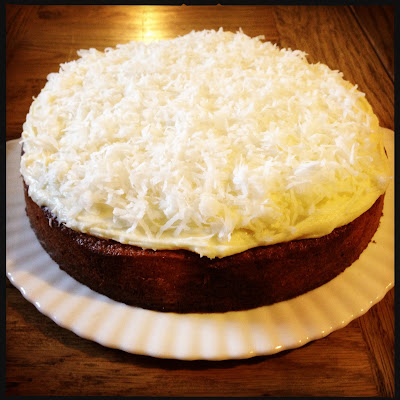Lime and coconut have an amazing affinity in my opinion, so when it came to creating a recipe for a coconut cake, it seemed obvious to me that lime juice and zest would need to be used. This deliciously light textured cake is baked as a large shallow cake before being topped with a cream cheese and coconut topping, it can equally easily be baked in 2 sandwich cake tins which can then have some of the topping spread between the two layers to make a more traditional cake, the choice is yours.
 |
| Jamaica brings the number up to 110, welcome! |
 |
| Fiji brings the count up to 111! welcome. |
For this recipe you will need;
300g of unsalted butter
300g of caster sugar
4 medium eggs
100g of sour cream
300g of self raising flour
150g of sweetened shredded coconut
the zest and juice of 2 limes
1 teaspoon of baking powder
1/2 teaspoon of salt
for the topping
100g of unsalted butter
100g of light cream cheese
300g of icing sugar
75g of sweetened shredded coconut
1 teaspoon of vanilla extract
1/2 teaspoon of salt
Begin by preparing your tin, 27cm by 7cm. Line with baking parchment and turn the oven on to 180C. Cream together the butter and the sugar, add the eggs one at a time. Add the sour cream along with the juice and zest of 2 limes. Add the coconut and finally fold in the flour sifted together with the baking powder. Transfer the mix to the prepared cake tin and bake in the centre of the oven for 45 to 50 minutes. If you are baking the cake in two smaller tins bake for 30 to 35 minutes or until a toothpick comes out clean when pushed into the centre of the cake. allow to cool in the tin.
Prepare the topping by beating together the butter and the icing sugar, then beat in the cream cheese. Spread the topping on the cooled cake and finally sprinkle on the 75g of sweetened shredded coconut.
Notes:
The coconut is available from Melbury & Appleton and you will find a link to their website at the top of my blog.












































